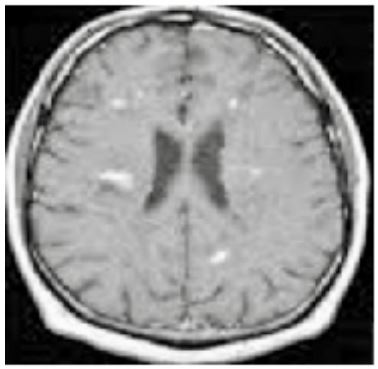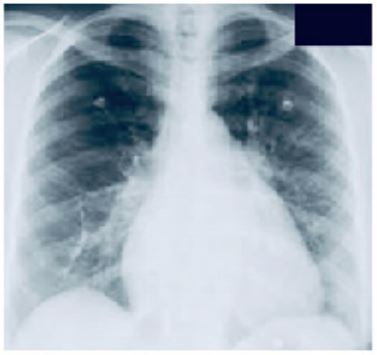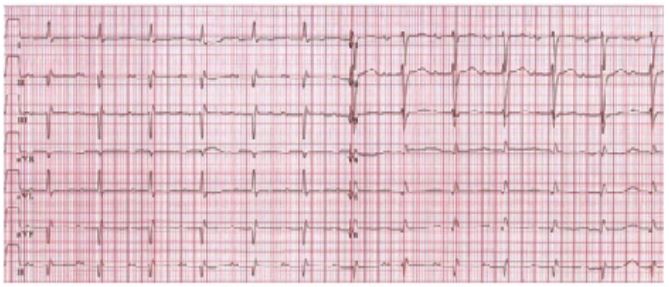Case Report - Volume 2 - Issue 6
Multiple sclerosis and mitral stenosis: is there an association? A dilemma
Azin Alizadehasl1; Sahar Saeidi2; Mahtab Mashayekhi3; Haniye Hajiali Fini4*; Niloufar Akbari Parsa5; Amir Abdi6
1Professor of Cardiology, Echocardiologist, Cardio-Oncologist, Cardio-Oncology Research Center, Rajaei Cardiovascular Medical and Research Center, Iran University of Medical Science, Tehran, Iran.
2Cardio-Oncology Research Center, Rajaei Cardiovascular Medical and Research Center, Iran University of Medical Science, Tehran, Iran.
3Cardio-Oncology Research Center, Rajaei Cardiovascular Medical and Research Center, Iran University of Medical Science, Tehran, Iran.
4Department of Adult Echocardiography, Rajaie Cardiovascular Medical and Research Center, Iran University of Medical Sciences, Tehran, Iran.
5Assistant Professor of Cardiology, Guilan University of Medical Sciences, Rasht, Iran.
6Medical student, Tehran Azad University of medical science, Iran.
Received Date : Sep 30, 2022
Accepted Date : Nov 07, 2022
Published Date: Nov 30, 2022
Copyright:© Haniye Hajiali Fini 2022
*Corresponding Author : Haniye Hajiali Fini, Department of Adult Echocardiography, Rajaie Cardiovascular Medical and Research Center, Iran University of Medical Sciences, Tehran, Iran.Tel: 09122084280
Email: haniyehajiali97@gmail.com
DOI: Doi.org/10.55920/2771-019X/1308
Abstract
Mitral stenosis is a valvular heart disease defined by narrowing of the mitral valve orifice and is characterized as the most common valvular involvement in developing countries. Although, the most common manifestations of mitral stenosis (MS) include heart failure, stroke, failure to thrive, pulmonary hypertension, and endocarditis, unusual associations occur too. Multiple sclerosis (MS) is a chronic immune-mediated, inflammatory demyelinating disease of the Central Nervous System (CNS) with relapsing-remitting phases due to recurrent episodes of inflammation and demyelination of Central Nervous System (CNS). Some studies found multiple sclerosis patients have a higher prevalence of cardiovascular disease that could be described by coexistence of some common risk factors and etiologies. incidence and prevalence of cardiac valvular disease in these patients were reported 0.7% over a 30 years follow up and 0-2.3% at the time of multiple sclerosis diagnosis, too .There is no proven association between cardiac MS (mitral stenosis) and demyelinating CNS MS (multiple sclerosis), but there have been hypotheses according to case reports and case series. We encountered three cases of mitral stenosis coexistent with multiple sclerosis who underwent appropriate treatment with good outcome and in our facility, we report one of them who had been previously diagnosed with CNS MS and admitted to our hospital with pulmonary edema due to cardiac MS. she underwent Percutaneous transvenous mitral commissurotomy (PTMC), her mitral valve area and systolic pulmonary artery pressure were improved. She is in good condition in both terms of mitral stenosis and multiple sclerosis during follow up. Mitral stenosis and multiple sclerosis, although rare, may occur together. Awareness of it for acceptable diagnosis and treatment and more evaluation in this issue should be noticed.
Keywords: Mitral stenosis; Multiple sclerosis; Valvular heart disease; Pulmonary edema.
Introduction
Mitral stenosis (MS) is a form of valvular heart disease characterized by narrowing of the mitral valve orifice and is the most prevalent valvular involvement in developing countries as a sequel of rheumatic heart disease , although, is seen in developed countries, too. The most common manifestations of mitral stenosis (MS) include heart failure, stroke, failure to thrive, and pulmonary hypertension. Increased left atrial size and pressure, developing atrial fibrillation (AF) rhythm, reduced left atrium (LA) contractility and blood stasis in LA promote thrombus formation which can be a source of cardio-embolic stroke in mitral stenosis patient [1-3]. Multiple sclerosis (MS) is an immune-mediated, inflammatory demyelinating disease of the Central Nervous System (CNS) leading to irreversible disability [4]. Some studies found multiple sclerosis patients have a higher prevalence of cardiovascular disease that could be described by coexistence of some common risk factors and etiologies such as immune system dysfunction, inflammation, endothelial dysfunction, and altered thrombogenic factors [5]. On other hand, Mitral stenosis often follow rheumatic fever and persistent inflammatory valve damage [6]. There is no proven association between cardiac MS and demyelinating CNS MS, but there have been hypotheses according to case reports and case series [7,8]. In our facility, we encountered three cases of mitral stenosis coexistent with multiple sclerosis, all women aged between 30 to 50 year old. Herein we report one of them who had been previously diagnosed with CNS MS and admitted to our hospital with pulmonary edema due to cardiac MS.
Case Report
A 37-year-old woman known case of multiple sclerosis (MS) since 8 years ago, (Figure 1). She had frequent episodes of weaknesses including left upper limb and right lower limb paresis, and she was on treatment for multiple sclerosis. She presented with tachypnea, tachycardia to our center .she complained alsi palpitation episodes. Her blood pressure was 90/60 mm/Hg. Pulmonary edema was revealed on her chest x-ray (Figure 2).transthoracic echocardiography data consisted severe rheumatismal mitral valve stenosis ( mitral valve area:0.7cm2) (Figure 3). She was suitable for Percutaneous transvenous mitral commissurotomy (PTMC). mitral valvuloplasty was performed for her and the mitral valve area increased to 1.5 cm2 (Figure 3). Systolic pulmonary artery pressure was 55 mmhg before PTMC that improved to 45 mmhg on her follow up echocardiography after 3 months. She is under follow-up for both cardiac MS and CNS MS and she is in good condition.

Figure 1: T1 weighted image following administration of gadolinium demonstrating enhancing lesions.

Figure 2: CXR with prominent left atrial auricle and pulmonary edema.

Figure 3: ECG ; Sinus rhythm, right axis deviation, incomplete RBBB; left atrial enlargement.

Figure 4:
- Transthoracic echocardiography; parasternal long axis view; thickened MV; hockey stick shape of anterior mitral valve leaflet; thickened and restricted posterior mitral valve leaflet.
- Transthoracic echocardiography, parasternal short axis view, thickened stenotic mitral leaflets, closed both commissures , MV area= 0.7 cm2
Discussion
Multiple sclerosis (MS) is a chronic central nervous system (CNS) disease with relapsing-remitting phases due to recurrent episodes of inflammation and demyelination of CNS and can affect cardiovascular function in different ways resulting in abnormalities in blood pressure response, heart rate, heart rhythm, left ventricular systolic function, and may cause pulmonary edema or cardiomyopathy. the essential mechanism of cardiovascular involvement in multiple sclerosis patients include oxidative stress and imbalance between oxidants and anti oxidants resulting in molecular damage ,endothelial dysfunction, chronic inflammation, myocyte structure alteration and automatic nervous system impairment [9]. Marrie et al. evaluated relation of valvular disease in multiple sclerosis patients as a systematic review in 2015. incidence and prevalence of cardiac valvular disease in these patients were reported 0.7% over a 30 years follow up and 0-2.3% at the time of multiple sclerosis diagnosis. no study provided a statistical evaluation about the prevalence of valvular disease in multiple sclerosis patients versus controls .mentioned data was also assessed in hospitalized multiple sclerosis patients leading to underestimation of true prevalent. Mitral stenosis was consistently less common in multiple sclerosis patients 10]. In 2017 Nomani et al. reported a 28-year-old male with severe mitral stenosis who had experienced many stroke-like episodes. His brain CT scans was characterized recurrent embolic stroke in each episode. He was evaluated by extensive neuroimagings such as MRI with contrast and diffusion-weighted imaging (DWI), spinal tap and cerebrospinal fluid (CSF) analysis. Work up findings revealed multiple sclerosis with periventricular, juxtacortial spine cord lesion with no new or old infarct evidences. Methylprednisolone pulse was descripted for him. The symptoms were alleviated with supportive therapy. He eventually underwent mitral valve replacement (MVR), which yielded positive clinical results [7].
In 1999 Uesugi H et al reported a 60-year-old woman with a previous history of Multiple Sclerosis who was diagnosed with mitral valve stenosis and tricuspid valve regurgitation. Under cardiopulmonary bypass, the mitral valve replacement and tricuspid valve annuloplasty were performed for her. The patient had an uneventful recovery with no complication [8]. Although there is no evidence supporting any correlation between cardiac MS and CNS MS, the case reports we mentioned above and the patients we were encountered, suggest that this concept might be in need of more investigations.
Conclusion
Cardiac MS and CNS MS, although rare, may occur together in a patient. Awareness of this issue and the use of appropriate diagnostic and therapeutic methods will improve patients prognosis.
References
- Chandrashekhar Y, Westaby S, Narula J. Mitral stenosis. The Lancet. 2009; 374(9697): 1271-83.
- Shah SN, Sharma S. Mitral Stenosis. Stat Pearls. Treasure Island (FL): Stat Pearls Publishing Copyright © 2022, StatPearls Publishing LLC. 2022.
- Islam H, Puttagunta SM, Islam R, Kundu S, Jha SB, et al. Risk of Stroke With Mitral Stenosis: The Underlying Mechanism, Treatment, and Prevention. Cureus. 2022; 14(4).
- Aloizou AM, Siokas V, Pateraki G, Liampas I, Bakirtzis C, et al. Thinking outside the ischemia box: advancements in the use of multiple sclerosis drugs in ischemic stroke. Journal of Clinical Medicine. 2021; 10(4): 630.
- Verma I, Eltawansy SA. Cardio-cerebral diseases. MOJ Clin Med Case Rep. 2016; 4(5): 123-129. [DOI: 10.15406/mojcr.2016.04.00107].
- Chandrashekhar Y, Westaby S, Narula J. Mitral stenosis. Lancet. 2009; 374(9697): 1271-83. [PMID: 19747723 DOI: 10.1016/S0140-6736(09)60994-6].
- Nomani AZ, Khatak IU, Iqbal M, Rajput HM, Nabi S. Coexistent Mitral Stenosis and Multiple Sclerosis: An Unprecedented Case. J Coll Physicians Surg Pak. 2017; 27(3): S43-S5.
- Uesugi H, Aomi S, Kunii Y, Saitoh N, Tomisawa Y, et al. Mitral valve replacement under cardiopulmonary bypass which complicated by multiple sclerosis: a case report. Kyobu geka The Japanese Journal of Thoracic Surgery. 1999; 52(7): 569-72.
- Kaplan TB, Berkowitz AL, Samuels MA. Cardiovascular dysfunction in multiple sclerosis. The neurologist. 2015; 20(6): 108-14.
- Marrie RA, Reider N, Cohen J, Stuve O, Trojano M, et al. A systematic review of the incidence and prevalence of cardiac, cerebrovascular, and peripheral vascular disease in multiple sclerosis. Multiple Sclerosis Journal. 2015; 21(3): 318-31.

